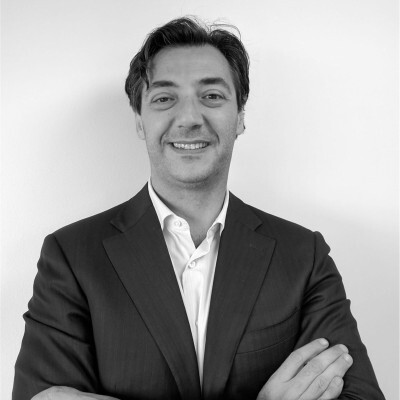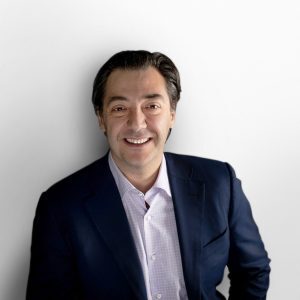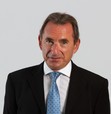#45 – The Chess Master
 /*! elementor - v3.22.0 - 24-06-2024 */.elementor-widget-text-editor.elementor-drop-cap-view-stacked .elementor-drop-cap{background-color:#69727d;color:#fff}.elementor-widget-text-editor.elementor-drop-cap-view-framed .elementor-drop-cap{color:#69727d;border:3px solid;background-color:transparent}.elementor-widget-text-editor:not(.elementor-drop-cap-view-default) .elementor-drop-cap{margin-top:8px}.elementor-widget-text-editor:not(.elementor-drop-cap-view-default) .elementor-drop-cap-letter{width:1em;height:1em}.elementor-widget-text-editor .elementor-drop-cap{float:left;text-align:center;line-height:1;font-size:50px}.elementor-widget-text-editor .elementor-drop-cap-letter{display:inline-block}
/*! elementor - v3.22.0 - 24-06-2024 */.elementor-widget-text-editor.elementor-drop-cap-view-stacked .elementor-drop-cap{background-color:#69727d;color:#fff}.elementor-widget-text-editor.elementor-drop-cap-view-framed .elementor-drop-cap{color:#69727d;border:3px solid;background-color:transparent}.elementor-widget-text-editor:not(.elementor-drop-cap-view-default) .elementor-drop-cap{margin-top:8px}.elementor-widget-text-editor:not(.elementor-drop-cap-view-default) .elementor-drop-cap-letter{width:1em;height:1em}.elementor-widget-text-editor .elementor-drop-cap{float:left;text-align:center;line-height:1;font-size:50px}.elementor-widget-text-editor .elementor-drop-cap-letter{display:inline-block} George Michelakis, was a top 3 global under-20 chess player. He now runs a $2bn long short equity hedge fund with a simple philosophy but a highly impressive track record.
SUMMARYIn his youth, George Michelakis, was a top 3 global under-20 chess player. No surprise he is pretty good at investing too, and runs a $2bn long short equity hedge fund out of London. Since 2006, he has compounded capital at a rate of 5.35x vs 3.43k for the MSCI world, on net exposure of 30-45%. That’s an impressive record but astonishingly, he entered his longest running short position 10 years ago.
We talked about his investing philosophy, his theory about a lifestyle recession, why shorting is critical to performance, how he manages the fund and the team, why he focuses on management and why, as in chess, man plus machine or analyst plus AI will beat the lone human, which has profound implications for investors.
/*! elementor - v3.22.0 - 24-06-2024 */.elementor-widget-image-box .elementor-image-box-content{width:100%}@media (min-width:768px){.elementor-widget-image-box.elementor-position-left .elementor-image-box-wrapper,.elementor-widget-image-box.elementor-position-right .elementor-image-box-wrapper{display:flex}.elementor-widget-image-box.elementor-position-right .elementor-image-box-wrapper{text-align:end;flex-direction:row-reverse}.elementor-widget-image-box.elementor-position-left .elementor-image-box-wrapper{text-align:start;flex-direction:row}.elementor-widget-image-box.elementor-position-top .elementor-image-box-img{margin:auto}.elementor-widget-image-box.elementor-vertical-align-top .elementor-image-box-wrapper{align-items:flex-start}.elementor-widget-image-box.elementor-vertical-align-middle .elementor-image-box-wrapper{align-items:center}.elementor-widget-image-box.elementor-vertical-align-bottom .elementor-image-box-wrapper{align-items:flex-end}}@media (max-width:767px){.elementor-widget-image-box .elementor-image-box-img{margin-left:auto!important;margin-right:auto!important;margin-bottom:15px}}.elementor-widget-image-box .elementor-image-box-img{display:inline-block}.elementor-widget-image-box .elementor-image-box-title a{color:inherit}.elementor-widget-image-box .elementor-image-box-wrapper{text-align:center}.elementor-widget-image-box .elementor-image-box-description{margin:0} GETTING INTO INVESTING
GETTING INTO INVESTINGBefore getting into hedge funds, George spent time in private equity, where he met with hundreds of management teams and learned about the importance of management, a central part of his philosophy today. But the ability to short added a new dimension and he relished the additional intellectual challenge imposed by thinking both about the fundamentals and the stockmarket perception.
Some takeawaysAs ever, this was a wide ranging conversation and a few highlights are extracted here, but please, we think it’s really best to listen to the show.
George’s ApproachGeorge talks about getting ahead of change – anticipating that a change is coming or that it is about to be recognised by the market – it’s the combination of understanding the fundamentals and the market perception of the business.
Both the short and long sides of the book are important. The fund generally has around 25 longs and twice that number of shorts. They generally have a 200% gross, which George thinks you need to make a long-short approach work. With a 120% long and 80% short book, he ends up with roughly 5% in a long and 1-2% in a short on average.
He will have an individual long as high as 10% of the fund so to own a stock, he has to be comfortable owning a 10% position and his long book is focused on high quality companies. Conversely, the short book is full of bad companies and George says “problems don’t get fixed easily”, and he entered his longest running short position 10 years ago! Steve wonders if this is a record.
AccountingGeorge has said in the past that if he had to pick one leading indicator on the short side, it’s aggressive accounting – it tends to be symbolic of a management team that’s trying to prove that it’s better than it really is.
Accounting is a big driver for shorts, and for under-performing longs. Yet investors don’t spend more time on this. George attributes this to the fact that it’s pretty dull and it’s much more interesting exciting and plain more fun to pick winning longs. Few funds are that successful on the short side.
George uses a football analogy – the best football teams are just as good in defence as at scoring goals. But accounting is critical to successful investing. And this is partly down to the market environment. George likens it to security – nobody worries about having an alarm in their home on a bright sunny day; it’s at night, in the dark, that you think about upgrading your alarm system.
ShortsShorting is a real source of alpha at Gladstone and is one of their core skills. George doesn’t use a shorting team and a long team, everyone is a generalist. He thinks the separation of roles is a thing of the past, as AI assistants do much more of the heavy lifting and repetitive tasks. There is an element of the mechanical about say accounting shorts, but he thinks much of that will in future be automated.
Even so, Gladstone use Behind the Balance Sheet to sharpen their accounting skills and please don’t feel that this is guaranteed to happen, and it’s not necessarily short term.
He sees common mistakes in shorting:
Earnings headwinds don’t generate much alphaOverly thematic shorts can get you in trouble; just because luxury is having a difficult time doesn’t mean that Hermes will be affected. Or if the autos are in trouble, it may not affect Ferrari.And shorting after a big leg down, may mean alpha is elusive.George thinks you really need to have the short culture to make this work.
Lifestyle RecessionGeorge has a theory which he calls the lifestyle recession. In Covid, there was plenty of money washing round and a lot of brands benefited from that surplus disposable income being spent. And of course that was extrapolated by the market. But as consumers have tightened their belts, there has been a shortfall and George is long true luxury and short aspirational luxury which consumers have less need for and less money to buy.
He is therefore long Ferrari and short some other “luxury” names, one of which he names in the podcast.
About George Michelakis
George Michelakis founded Gladstone Management in 2005, launched the Lasker Fund in 2006 and is CIO of the firm. Previously, George was an investment team member at Lansdowne Partners (Developed Markets Fund, 2003- 2005). Check out our past conversations with Pete Davies and with Stuart Roden who started that fund.
George’s first professional role was in the Investment Banking Division – M&A at Credit Suisse in London, and then he was a Principal in the Private Equity business of Capital Z Partners. It managed the largest private equity fund dedicated to financial services and also provided seed capital to private equity and hedge funds. Whilst at Capital Z, he held various board positions at a number of the portfolio companies in the software, credit information and insurance sectors.
George qualified as an Actuary in 1996 (Institute of Actuaries, London) after graduating top of his class with 1st Class Honours (BBusSci, Actuarial Science, 1995) from the University of Cape Town in South Africa.
Whilst in his youth George competed in both South African and International chess events and was awarded the FIDE International Chess Master title in 1995. He was 3rd in the World Championship Under 20 in 1992 and was South African chess champion and South African Number One at the World Chess Olympiad (1996, 2004).
The Lasker fund is named after former world chess champion Emanuel Lasker who is considered one of the greatest chess players of all time.

/*! elementor - v3.22.0 - 24-06-2024 */.elementor-widget-divider{--divider-border-style:none;--divider-border-width:1px;--divider-color:#0c0d0e;--divider-icon-size:20px;--divider-element-spacing:10px;--divider-pattern-height:24px;--divider-pattern-size:20px;--divider-pattern-url:none;--divider-pattern-repeat:repeat-x}.elementor-widget-divider .elementor-divider{display:flex}.elementor-widget-divider .elementor-divider__text{font-size:15px;line-height:1;max-width:95%}.elementor-widget-divider .elementor-divider__element{margin:0 var(--divider-element-spacing);flex-shrink:0}.elementor-widget-divider .elementor-icon{font-size:var(--divider-icon-size)}.elementor-widget-divider .elementor-divider-separator{display:flex;margin:0;direction:ltr}.elementor-widget-divider--view-line_icon .elementor-divider-separator,.elementor-widget-divider--view-line_text .elementor-divider-separator{align-items:center}.elementor-widget-divider--view-line_icon .elementor-divider-separator:after,.elementor-widget-divider--view-line_icon .elementor-divider-separator:before,.elementor-widget-divider--view-line_text .elementor-divider-separator:after,.elementor-widget-divider--view-line_text .elementor-divider-separator:before{display:block;content:"";border-block-end:0;flex-grow:1;border-block-start:var(--divider-border-width) var(--divider-border-style) var(--divider-color)}.elementor-widget-divider--element-align-left .elementor-divider .elementor-divider-separator>.elementor-divider__svg:first-of-type{flex-grow:0;flex-shrink:100}.elementor-widget-divider--element-align-left .elementor-divider-separator:before{content:none}.elementor-widget-divider--element-align-left .elementor-divider__element{margin-left:0}.elementor-widget-divider--element-align-right .elementor-divider .elementor-divider-separator>.elementor-divider__svg:last-of-type{flex-grow:0;flex-shrink:100}.elementor-widget-divider--element-align-right .elementor-divider-separator:after{content:none}.elementor-widget-divider--element-align-right .elementor-divider__element{margin-right:0}.elementor-widget-divider--element-align-start .elementor-divider .elementor-divider-separator>.elementor-divider__svg:first-of-type{flex-grow:0;flex-shrink:100}.elementor-widget-divider--element-align-start .elementor-divider-separator:before{content:none}.elementor-widget-divider--element-align-start .elementor-divider__element{margin-inline-start:0}.elementor-widget-divider--element-align-end .elementor-divider .elementor-divider-separator>.elementor-divider__svg:last-of-type{flex-grow:0;flex-shrink:100}.elementor-widget-divider--element-align-end .elementor-divider-separator:after{content:none}.elementor-widget-divider--element-align-end .elementor-divider__element{margin-inline-end:0}.elementor-widget-divider:not(.elementor-widget-divider--view-line_text):not(.elementor-widget-divider--view-line_icon) .elementor-divider-separator{border-block-start:var(--divider-border-width) var(--divider-border-style) var(--divider-color)}.elementor-widget-divider--separator-type-pattern{--divider-border-style:none}.elementor-widget-divider--separator-type-pattern.elementor-widget-divider--view-line .elementor-divider-separator,.elementor-widget-divider--separator-type-pattern:not(.elementor-widget-divider--view-line) .elementor-divider-separator:after,.elementor-widget-divider--separator-type-pattern:not(.elementor-widget-divider--view-line) .elementor-divider-separator:before,.elementor-widget-divider--separator-type-pattern:not([class*=elementor-widget-divider--view]) .elementor-divider-separator{width:100%;min-height:var(--divider-pattern-height);-webkit-mask-size:var(--divider-pattern-size) 100%;mask-size:var(--divider-pattern-size) 100%;-webkit-mask-repeat:var(--divider-pattern-repeat);mask-repeat:var(--divider-pattern-repeat);background-color:var(--divider-color);-webkit-mask-image:var(--divider-pattern-url);mask-image:var(--divider-pattern-url)}.elementor-widget-divider--no-spacing{--divider-pattern-size:auto}.elementor-widget-divider--bg-round{--divider-pattern-repeat:round}.rtl .elementor-widget-divider .elementor-divider__text{direction:rtl}.e-con-inner>.elementor-widget-divider,.e-con>.elementor-widget-divider{width:var(--container-widget-width,100%);--flex-grow:var(--container-widget-flex-grow)} BOOK RECOMMENDATION
Interestingly, we talked quite a bit about left brain and right brain thinking and George therefore recommended The Master and His Emissary: The Divided Brain and the Making of the Western World by Iain McGilchrist. The book is about how the brain is structured and how that influences our thinking. This book was also recently recommended by Tom Slater of Baillie Gifford, our guest in January!
 Buy on amazon HOW STEVE KNOWS THE GUEST
Buy on amazon HOW STEVE KNOWS THE GUESTGladstone is a training client of Behind the Balance Sheet but Steve first met George at a small private conference where George took Q&A, and Steve asked him to come on the podcast. It says quite a lot about the Gladstone setup that the analysts themselves took the initiative to organise their own training without the CIO getting involved.
Prev#44 – The Think Tank Manager Steve’s article on finance Substack was featured in the FTNext
The post #45 – The Chess Master appeared first on Behind The Balance Sheet.



